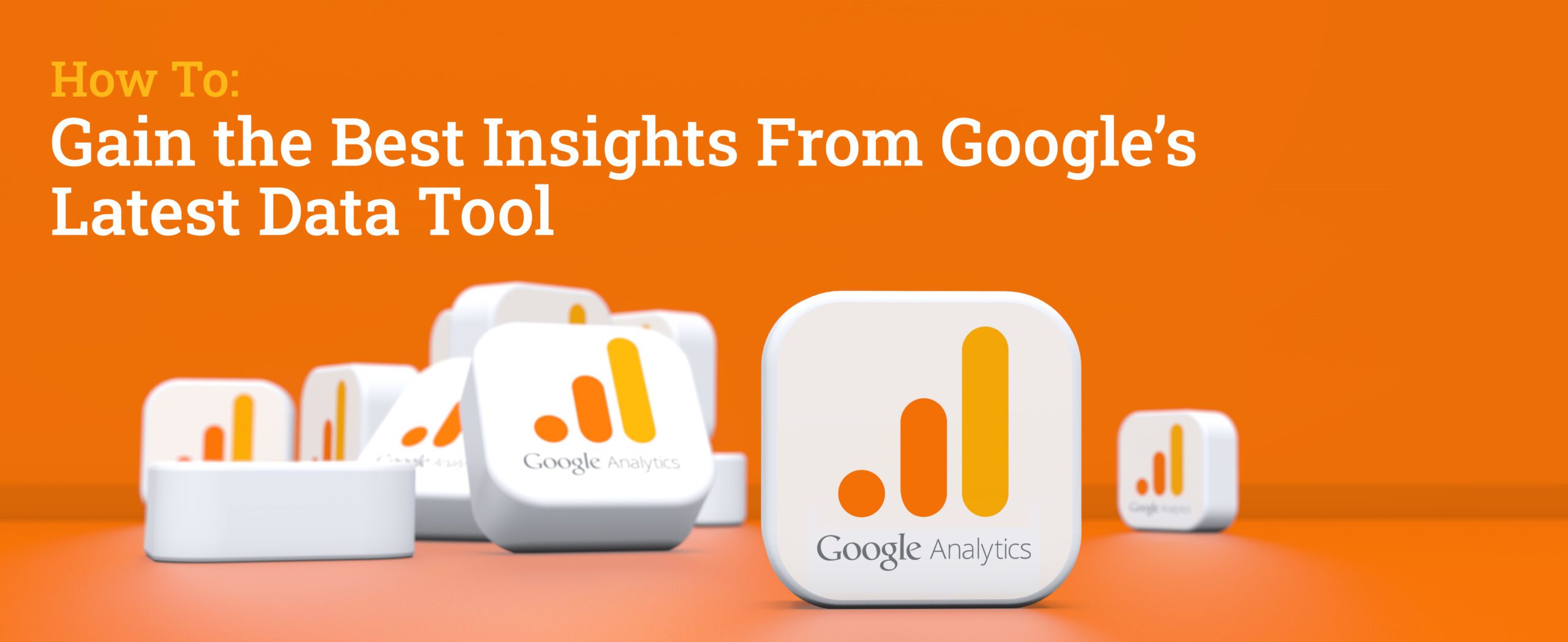Ready or not, on July 1, 2023, Google is officially changing the way we track website data.
Google’s legacy data tracking tool, Universal Analytics, is on its way out the door. And Google Analytics 4 (GA4) is positioned to become the data tracker of the future.
What makes GA4 so different? How can your small business make the most of the advanced data GA4 provides? And why the big switch to begin with? As a devoted team of data gurus and enthusiastic analysts who could talk numbers and data points all day—we’re so glad you asked 🙂
So let’s jump in!
Universal Analytics vs. GA4… What’s the big deal?
The biggest difference between Google’s two data analytics tools is how they collect and use website traffic data.
Universal Analytics (UA) tracks the main actions each single visitor takes during their website session. In your UA platform, you’ll find metrics like page views, bounce rate, and total number of visitors to your site. These numbers are helpful, but UA only has a limited number of metrics you can track. And to watch more complex and valuable metrics like sign-ups or purchases, you have to manually turn on your own tracking reports. It’s not difficult to do, but it’s not exactly intuitive either.
GA4, on the other hand, keeps a close eye on the events that occur on your website. An event is any kind of engaged activity that shows visitors are actively using your site. Events like first time visits, page views, and scrolling tell you a lot about the visitors checking out your site—and what catches their attention! Plus, activities like signing up for your newsletter, starting a video, finishing a video, or submitting a form are automatically tracked by GA4—no special set-ups needed!
To sum up the key differences between the two platforms, UA provided general, generic website traffic information. But GA4 gives you clear insights into your visitors’ behaviors, journey, and attention span.
How can you use GA4 to level up your marketing efforts?
First, you have to activate GA4 on your site. In March 2023, Google began creating GA4 accounts for everyone with an active UA account. So chances are, you’ve already got this powerful tool at your disposal.
Google also has countless free resources to help you navigate the migration with ease—or you can just ask us!
Once your account is activated, start playing around with the reports, data, and tracking tools built right into the system. With just a few clicks, you can start accessing essential website data, like:
- Where your website visitors are coming from (down to the very website URL that drove them to yours!).
- What social media platforms generate the most interest for your website.
- What site pages triggered the most activity, like clicks, video watches, and scrolling.
- How long users typically stayed on each page they visited.
We love working with clients who have GA4 set up for their site because every data point serves as confirmation that our strategy is working, or inspiration for the next phase of our marketing plan. This single tool reveals what strategies are worth doubling down on, what tweaks are needed, and what your customers find most valuable about your site.
So what’s next?
In 2023 and beyond, GA4 isn’t just a good tool to have. It’s practically a requirement for small businesses who want to expand their brand awareness, sell more products or services, and educate their audience. And when you have a team of GA4 analysts and experts on your side, it’s never been easier to access the powerful data you need most!
Make the big GA4 switch—and build your next profit-driving digital marketing strategy—with MediaSpark!
When we say we leverage a data-backed approach to every form of marketing, we mean it! We have the tools and know-how it takes to gather meaningful data about your dream customers, convert that data into actionable marketing strategies, and drive remarkable results for the clients we serve. Chat with our team to learn more about what MediaSpark can do for you!





